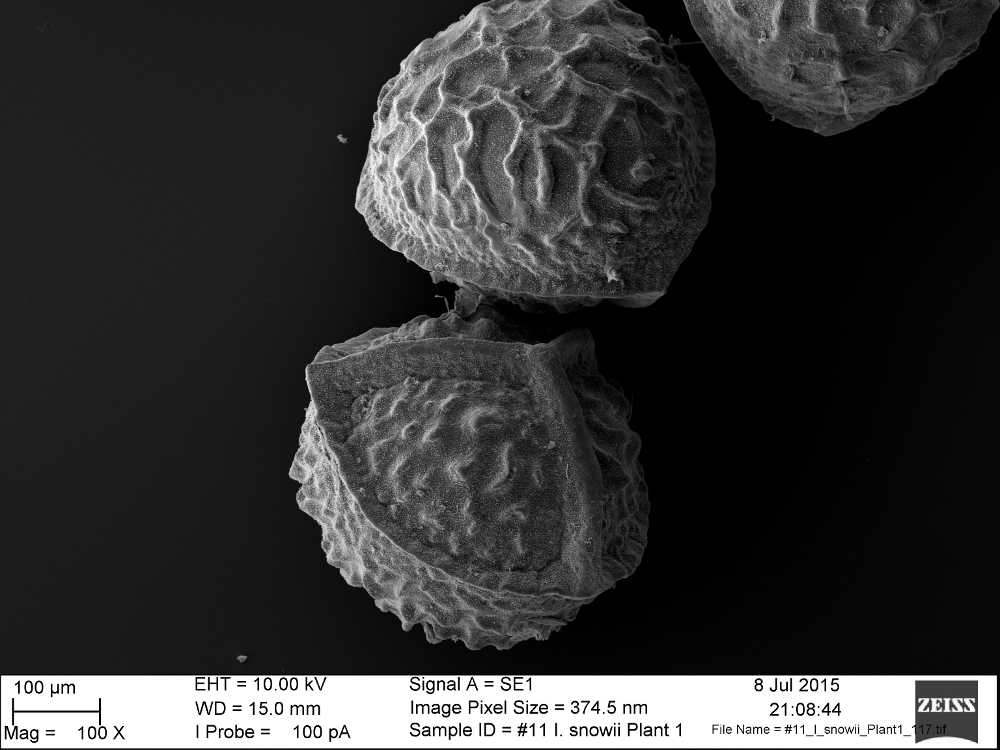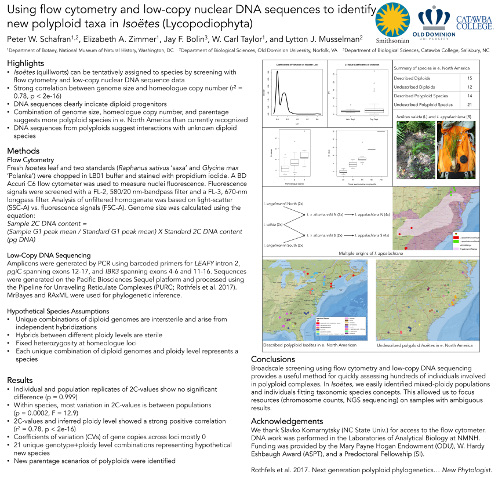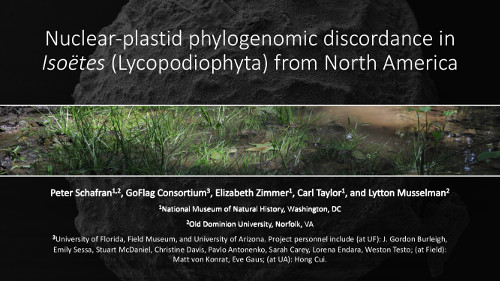Isoetes

My primary research interest is the genus Isoetes in the southeastern US. These aquatic lycophytes are distributed globally and adapted to various habitats, despite little change in their outward appearance. The evolution, systematics, natural history, and ecology of these elusive plants are poorly understood.
Diploid Phylogeny
Molecular data are useful for addressing some hypotheses about the phylogenetic relationships of the basic diploid species, and parentage of numerous allopolyploid taxa. I am sequencing whole chloroplast genomes (plastomes) and several nuclear markers to resolve the phylogeny of this regional group of species. Preliminary data show considerable discordance between individual nuclear markers and plastomes, suggesting the possibility of introgression and incomplete lineage sorting within this young and promiscuous clade.
Polyploid Parentage
By combining nuclear and chloroplast molecular data, we can identify the putative parents of the tetraploid, hexaploid, octoploid, and decaploid species of Isoetes found in the Southeast. Population-level screening of these polyploids has revealed several cryptic species -- within named species are individuals formed by different diploid parents.
Molecular Ecology
The ecology of most species of Isoetes is poorly known. It is thought that over short distances spores are distributed mostly by water, while long distance dispersal events occur when spores are carried by waterfowl. Molecular data may explain the dispersal of these plants throughout the environment.
Morphology
The extent to which Isoetes morphology is affected by their environment is not known. We are conducting studies to evaluate the phenotypic plasticity of some Isoetes characters.


